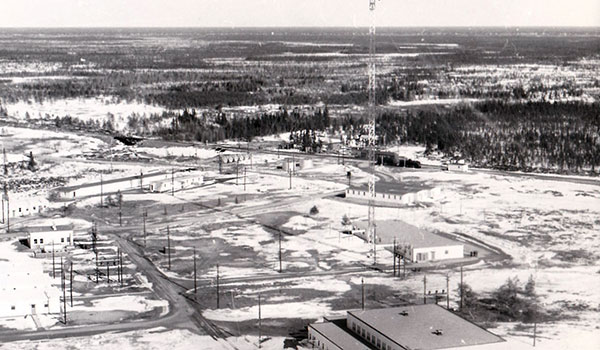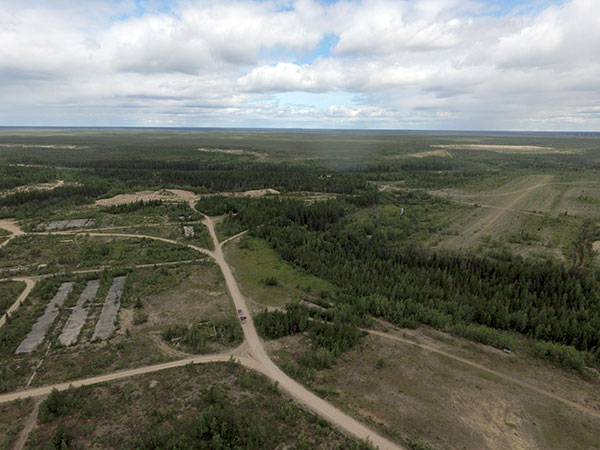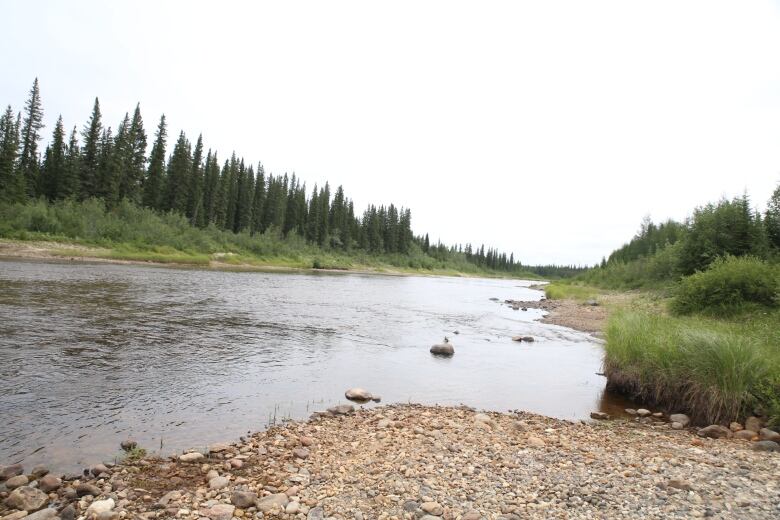The land and the people are one
The Fox Lake Cree has inhabited Northern Manitoba for centuries. Using our skills in living a holistic, healthy, and rich life off the land and all it provided, we adapted to the arrival of the fur trade and settlers to Canada. For centuries, we found ways to take advantage of the opportunities that these changes brought to our territory, while maintaining our connection to land and culture. To this day, to the people of Fox Lake Cree Nation, “The Land and The People are One”. With the arrival of the Canadian National Railway (CNR), our people came to settle at the location that is now the Town of Gillam, which is a part of our traditional territory. Valued for our knowledge of the Northern landscape, and skills that complemented a life along the remote tracks, our community adapted to employment on the railway. For decades Fox Lake lived in relative cooperation with the CNR, whose transportation objective did not threaten our access to or use of our land while providing jobs that fit within our traditional way of life.
Fox Lake Cree Nation, as part of the Homeguard Cree, adhered to Treaty 5 in 1910, 33 years after Treaty 5 was initially entered into. In 1947, the Government of Canada formally recognized Fox Lake as a distinct Nation, and promised our people a reserve land base within our territory. Initial land surveys were conducted by representatives of Canada to establish the Fox Lake reserve in and around the site that is now the Town of Gillam, but instead of securing our community’s reserve land, in 1966 the Government of Canada, and the Government of Manitoba, created the Local Government District of Gillam. At 1,996 square kilometres, running along the Nelson River, Gillam’s land area is more than four times the size of the City of Winnipeg. Its borders ensure that lands and the power of the mighty Nelson River is forever set aside for the exclusive use of the Government of Manitoba, through Manitoba Hydro, for the construction of hydroelectric dams, transmission infrastructure, dykes, and substations, primarily for the benefit of urban centres in southern Manitoba.
In addition, in the 1950s, the Government of Canada unilaterally proceeded to establish Station Bird, a Cold War radar station of the Royal Canadian Air Force (RCAF), near the Bird CN rail stop. The station housed 100 men and consisted of numerous buildings, a runway, large fuel storage tanks, and steel towers used as antennas for the Doppler radar system. Closed in 1964, the abandonment without cleanup or proper decommissioning has left the concrete outlines of buildings and the roads connecting them still clearly visible. Canada has yet to remediate the site, hampering Fox Lake’s efforts of expanding the Bird Reserve, located just opposite the railroad tracks.

One of the buildings and communications towers at RCAF Station Bird (circa 1962)
Source: Stan Summerhill

Source: Stan Summerhill

Aerial view of RCAF Station Bird (circa 1962)
Source: Stan Summerhill
In the 1960s, Manitoba Hydro began its construction of hydroelectric generating stations, and their associated converter stations and high-voltage transmission lines to carry the power of the Nelson River to the south. Right on top of our community, the Town of Gillam was built to house the thousands of workers that were needed. The people of Fox Lake were deemed squatters in our own homeland. As the government gave away our land, our homes were bulldozed and graves unearthed to make room for housing, a hospital, and facilities for the new Manitoba Hydro town. We returned from residential schools and watched as the new Town and dams erupted around us. Meanwhile, thousands of workmen descended into our territory, to build the dams that would alter the landscape, and ultimately the traditional lifestyle of our people forever. There was no adapting to this. Crucial traditional resources were lost as fish habitats were destroyed, and caribou migration patterns were altered, compounding the effects of residential schools as children returned home having lost our language, our culture, and our connection with our families, our people, and our traditional way of life. Assaults, racism, and rapes occurred, traumatizing and altering lives forever. This has been documented in many reports, mostly recently by the Manitoba Clean Environment Commission in 2018. Unfortunately, the RCMP didn’t help, and in many cases, made things worse.
In the 1970s, as governments began to realize the impact their actions were having on First Nations people and northern communities, talks began on trying to address the wrongs that were done. Even though Fox Lake joined the Northern Flood Committee in 1974, Fox Lake, with our community and homes surrounded by hydro development, was left out of signing the Northern Flood Agreement.
It was not until 1985 that Fox Lake would finally receive a small 98 acre reserve at Bird, across the railroad tracks from the former RCAF station, a place where some members found refuge after their community was taken over by the establishment of the Town of Gillam. By 1992, construction of Limestone, the third and largest hydro generating station, was completed. Construction workers, and the money they earned, drained back out of the region, leaving behind a community and landscape changed forever.
Today, Fox Lake remains without a secure and complete land base upon which to provide a home for their people, in the territory in which they have lived since time immemorial. In 2004, the Government of Manitoba and Manitoba Hydro entered into a settlement agreement to begin to address some of the adverse impacts of hydro development. The Government of Canada has yet to settle with Fox Lake for its failure to secure Fox Lake’s interest in securing adequate reserve land in the Town of Gillam.

Source: Gordon Goldsborough

Source: Gordon Goldsborough

